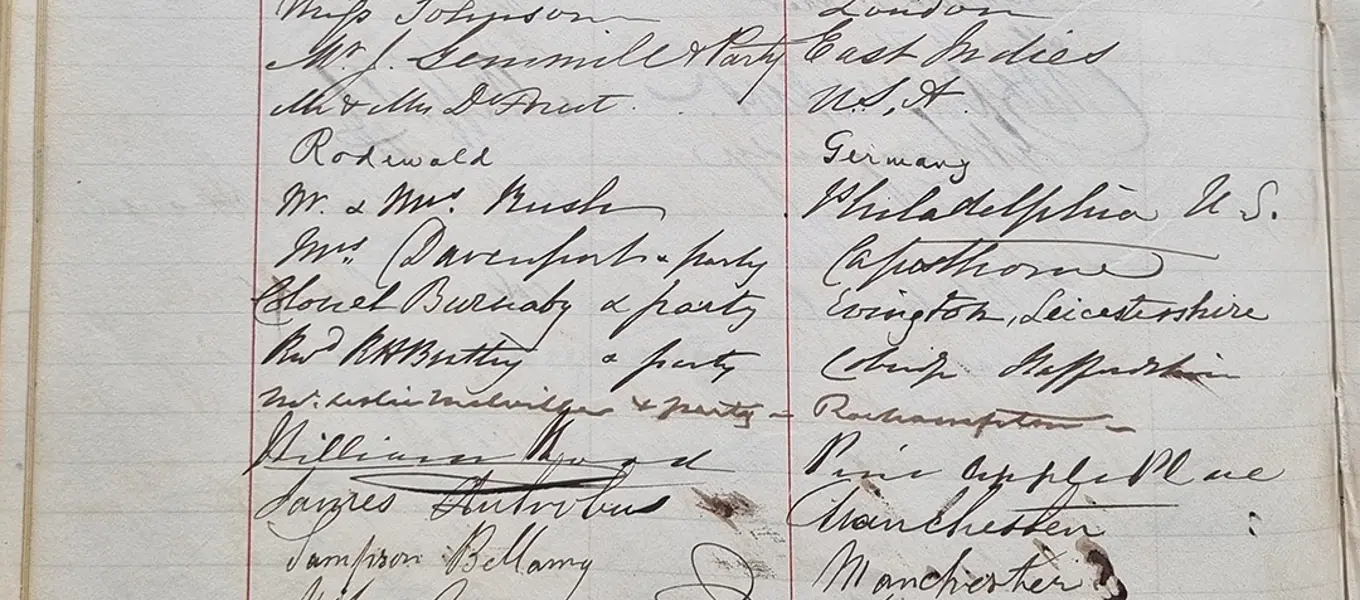Collections and Archives Assistant Ian Gregory reports on a 19th-century visitor to Chatsworth.
On 2 September 1845, a Mrs Davenport signed into our Visitors’ Book at Chatsworth. She gave her address as Capesthorne. This was Capesthorne Hall, a country house in Cheshire. There was already a link between Chatsworth and Capesthorne for Sir Joseph Paxton had, in about 1837, designed a large conservatory at the latter.
A house was built at Capesthorne in the early eighteenth century. It was remodelled in the 1830s and a Jacobean-style frontage went up. In 1861 the main part of the hall was destroyed by fire. It was rebuilt by an architect named Antony Salvin who also used the Jacobean style. The hall is built of bricks with a slate roof. It is now occupied by the Bromley-Davenport family and is a venue for weddings and corporate events.
During the eighteenth century, Capesthorne belonged to a man called John Ward. Ward died without a son in 1748 and Capesthorne passed to the Davenports when Ward’s daughter married into that family.

The Mrs Davenport who called at Chatsworth was probably Caroline, née Hurt, of Wirksworth in Derbyshire. She was, in 1830, married to Edward Davies Davenport (1778-1847). He served in the army from 1799 to 1807. He got into debt by gambling, as did Duchess Georgiana at Chatsworth. Davenport’s debts were eased when his father transferred to him some family estates at Calveley. This was done on the advice of his mother Charlotte, née Snyed. Edward inherited Capesthorne on the death of his father in 1837.
Edward Davies Davenport attempted to enter Parliament in 1820 but his father refused to support him, partly because of political differences but also because his father didn’t consider him responsible enough. In 1826 Edward entered Parliament as the Whig M.P. for Shaftsbury and served until 1830. The 6th Duke of Devonshire was also a Whig. We don’t know if Mrs Davenport met the Duke that day in 1845, but she was visiting the home of a political ally.






